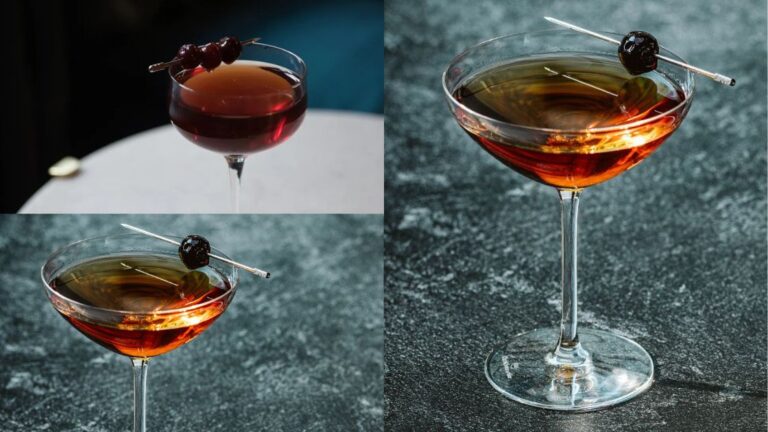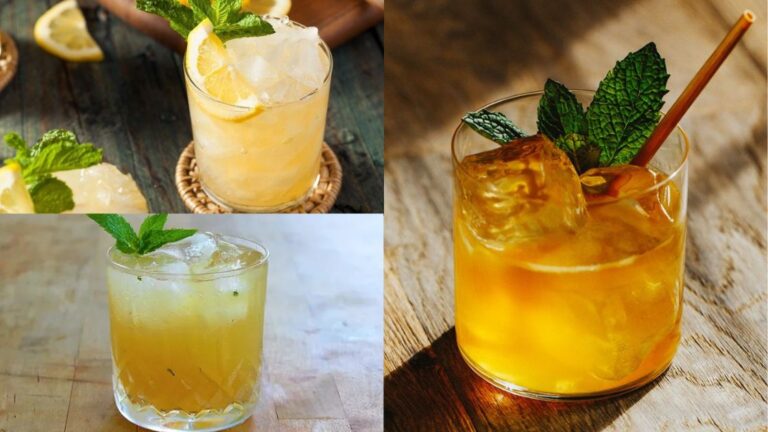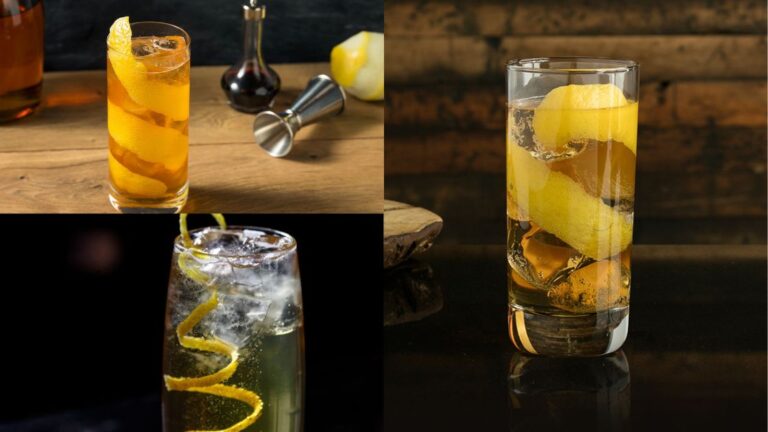Whiskey, an amber-toned spirit appreciated by connoisseurs worldwide, has a deep history steeped in tradition and craftsmanship. It’s a distilled alcoholic beverage made primarily from fermented grain mash, including barley, corn, rye, and wheat. The distinct flavor, aroma, and complexity found in each bottle of whiskey come from the intricate processes of fermentation, distillation, and aging in wooden casks.
The quality of whiskey plays a pivotal role in its taste and the experience of drinking it. Whether you’re sipping it neat, on the rocks, or as part of a well-mixed cocktail, the excellence of the whiskey can significantly elevate your enjoyment. Good whiskey is distinguished by a balance of flavors, a pleasant aroma, and a smooth finish. On the other hand, bad whiskey can be overwhelmingly strong, have off-putting smells, or leave an unpleasant aftertaste. But, it’s not just about taste. A high-quality whiskey often represents a history of skilled craftsmanship and the use of premium ingredients.
This article aims to guide you through the art of distinguishing between good and bad whiskey. With a world of whiskeys to explore, from Scottish Scotches and American Bourbons to Irish Whiskeys and Japanese Malts, understanding what denotes quality will enhance your appreciation of this fine spirit. Let us embark on this enlightening journey, allowing you to become a true whiskey connoisseur.
Understanding Whiskey
Brief history of whiskey
Whiskey’s history stretches back centuries, its origins nestled in the practices of ancient cultures. It’s believed that the art of distillation started with Babylonians in Mesopotamia (modern-day Iraq) around 2000 BC. However, the spirit we know as whiskey was not distilled until much later. It’s thought that Irish monks brought the technique of distillation back to their homeland around 1000 AD, marking the dawn of whiskey production.
The word “whiskey” itself is derived from the Irish term “uisce beatha,” meaning “water of life,” signifying the importance of this drink in social and economic aspects of life. Over time, whiskey production spread to Scotland, America, and other parts of the world, each bringing its unique style and flavor to the beloved spirit.
Types of whiskey: Scotch, Irish, Bourbon, Rye, etc.
There are several types of whiskey, each defined by specific regulations related to their production, ingredients, and aging process.
- Scotch Whisky: Produced in Scotland, Scotch (always spelled without an “e”) must be made from malted barley and aged in oak barrels for at least three years. Varieties include Single Malt, Blended Malt, Single Grain, and Blended Scotch Whisky.
- Irish Whiskey: Typically triple-distilled for a smoother finish, Irish Whiskey must be aged in wooden casks for a minimum of three years. Its flavors are usually lighter and smoother than Scotch.
- American Whiskeys: This includes Bourbon, Tennessee, and Rye whiskeys. Bourbon, made primarily from corn, must be aged in new charred-oak barrels, with no minimum specified aging period. Tennessee Whiskey is essentially bourbon that has been filtered through charcoal before aging. Rye Whiskey, spicier than bourbon, can be made anywhere but has specific rules in the U.S. and Canada regarding the rye content in the mash bill.
- Other Whiskeys: Japanese, Canadian, and Indian whiskies are other popular categories, each with unique characteristics and production methods.
Whiskey production process and its impact on quality
The production process of whiskey involves several steps, each contributing to the final product’s quality. It starts with malting, where barley is soaked, germinated, and then dried in a kiln. The malted barley is then milled and mixed with hot water to extract the sugars, creating a liquid known as wort. Yeast is added to the wort, converting the sugars into alcohol, a process known as fermentation. This results in a low-alcohol liquid known as “wash.”
The wash is then distilled, often in copper stills, which helps remove impurities. The distilled liquid, or “new make spirit,” is high in alcohol and low in flavor. It’s then filled into casks for maturation, where it gains flavor and character from the wood. The environment in which it’s stored can also impart distinct flavors. After maturing, the whiskey is often diluted, filtered, and bottled.
Each step in this process can impact the whiskey’s quality. The choice of grains, water, yeast, and casks, the distillation process, and the length and conditions of maturation all play crucial roles in shaping a whiskey’s profile. Understanding these nuances can provide insight into why one whiskey differs from another and how to discern between a good and a bad whiskey.
Factors to Consider When Judging Whiskey
Age: Why it matters
The age of a whiskey can significantly impact its flavor and quality. As whiskey ages in the barrel, it absorbs compounds from the wood, which contribute to its color, flavor, and aroma. Moreover, the slow evaporation of water and alcohol, known as the “angel’s share,” concentrates the remaining spirit over time, potentially adding depth and complexity. However, older is not always better. Over-aged whiskeys can take on too much oak influence, leading to overly tannic or woody flavors. The optimal aging period varies based on the whiskey type and the conditions of the aging environment.
Origin and geographic influence
The place of origin can also play a crucial role in a whiskey’s quality. Different regions have unique regulations, traditions, and climate conditions that influence the production process and final taste profile. For instance, Scotch whiskies often have a smoky, peaty flavor due to the use of peat in the malting process, while bourbon, with its requisite corn base and new charred oak aging, tends to have a sweeter, fuller-bodied profile.
Type of cask used for aging
The type of cask used for aging whiskey is another key factor in determining its quality and taste. Most whiskey is aged in oak barrels, but the previous use of that cask (if any) can impart distinct flavors. For instance, bourbon is aged in new charred oak barrels, giving it vanilla and caramel notes, while Scotch whisky is often aged in used sherry, bourbon, or other wine barrels, which can impart a variety of fruity, spicy, or sweet characteristics.
Proof: Alcohol content and its effect on taste and quality
The proof, or alcohol content, of a whiskey can influence its taste and quality. Higher proof whiskies (often over 50% alcohol by volume) can provide a more intense flavor experience and may be preferred by some enthusiasts. However, if not well balanced, the high alcohol content can also overpower subtle flavors, resulting in a harsh, burning sensation. Lower proof whiskies (around 40% alcohol by volume) may be smoother and easier to drink, especially for those new to whiskey.
Presence of additives
Quality whiskies generally contain no additives, with the flavor coming solely from the grains, water, yeast, and aging process. However, some producers may add caramel color or other additives to adjust the flavor or appearance. While this is not inherently bad and is accepted in some whiskey styles, purists often prefer whiskies without additives, as they provide a more authentic expression of the spirit’s character.
Physical Evaluation of Whiskey
Visual examination: Color and consistency
The first step in physically evaluating a whiskey is by sight. Observe the color, which can give you clues about its age and the type of cask used for maturation. Darker shades often suggest a longer aging period or the use of sherry or wine casks, while lighter hues may indicate a younger whiskey or maturation in bourbon casks. However, keep in mind that some whiskies may have caramel color added, which can alter this visual clue. Consistency can also be important. A “leggy” whiskey, where the liquid forms streaks down the side of the glass, can indicate a higher alcohol content or a rich, viscous mouthfeel.
How to properly nose whiskey: The role of aroma in quality
The aroma, or “nose,” of a whiskey is a significant aspect of its quality. To nose whiskey, swirl it gently in the glass to release its aromas, then take a gentle sniff to identify the different scents. A good-quality whiskey often has a complex, layered aroma that may include notes of fruits, spices, grain, wood, or smoke, depending on the whiskey type. If the alcohol smell is overpowering, it may indicate a high-proof or poorly balanced whiskey.
Tasting: Identifying flavors and balance
The moment of truth in assessing a whiskey’s quality comes with tasting. Take a small sip and let the whiskey coat your tongue and mouth before swallowing. Try to identify the primary flavors – these could range from sweet (caramel, vanilla), to fruity (apple, berry, citrus), to grainy (corn, barley, rye), to earthy/woody (oak, smoke, peat), and more. Also, consider the balance: A well-made whiskey should not be overly dominated by one flavor but present a harmonious blend.
The finish: Length and complexity
The finish refers to the taste that lingers after swallowing the whiskey. A high-quality whiskey typically has a long and pleasing finish, with the flavors gradually evolving and fading. A poor quality whiskey may have a short, flat finish or leave an unpleasant aftertaste. The finish can often reveal subtle flavors that were not immediately apparent in the initial tasting, adding to the overall complexity and enjoyment of the whiskey.
Beyond Taste: Other Indicators of Quality
Brand reputation and awards
A whiskey brand’s reputation can often give an indication of its quality. Brands with a long history of whiskey production and a strong dedication to craftsmanship are likely to produce high-quality whiskies. Likewise, if a whiskey has won prestigious awards or consistently receives high ratings from experts, this can be a reliable sign of quality.
Price: Is more expensive always better?
While price can sometimes be a proxy for quality in the whiskey world, it’s not a universal rule. Certainly, some expensive whiskies are exceptional, with their high price tag reflecting the quality of ingredients, length of maturation, and the care taken in their production. However, there are also many reasonably priced whiskies that offer excellent quality and enjoyment. It’s important to remember that personal preference plays a huge role in whiskey enjoyment, so a less expensive whiskey that aligns with your flavor preferences could be a better choice than a pricier bottle that doesn’t.
Packaging: Importance of bottle design and labeling
The design of a whiskey’s packaging, including the bottle and label, can also provide some cues about its quality. High-quality whiskies often come in distinctive, carefully designed bottles, reflecting the producer’s pride in their product. Meanwhile, the label provides crucial information, including the type of whiskey, the age statement, the alcohol content, and possibly details about the production process. Labels that are informative and transparent about what’s inside the bottle can often be a positive sign of quality. However, it’s worth noting that while eye-catching design and detailed labels can indicate a high-quality whiskey, they’re not a guarantee – the proof is always in the tasting.
Common Myths and Misconceptions About Whiskey Quality
Debunking myths about whiskey color, age, and price
- Whiskey color: While color can give some indications about a whiskey’s age or the type of cask used, it’s not a definitive indicator of quality. Some believe darker whiskey is better, but color can be influenced by factors unrelated to quality, like the addition of caramel coloring.
- Age: The notion that older whiskey is always better is a common myth. While aging can help develop complex flavors, it’s possible for a whiskey to be over-aged and take on too much wood flavor, or for a younger whiskey to hit the perfect balance of flavors for its style.
- Price: The assumption that a more expensive whiskey is inherently better is not always accurate. While price can reflect factors like production cost, age, and rarity, it doesn’t necessarily guarantee a better tasting experience. There are many reasonably priced whiskies that are considered high quality.
Clarifying misconceptions about taste preference and whiskey quality
- Strong flavors: Some people equate strong flavors, particularly smoky or peaty flavors, with high-quality whiskey. In reality, these flavors are characteristic of certain whiskey styles and do not determine quality.
- Smoothness: The perception that a “smooth” whiskey without any burn is the mark of a good whiskey is subjective. Some whiskey enthusiasts enjoy a bit of burn, finding that it adds to the complexity of the tasting experience.
- Personal preference vs. quality: It’s essential to distinguish between personal preference and objective quality. You might prefer a particular style or flavor profile, but that doesn’t mean whiskies outside your preference are of lesser quality.
Remember, the best whiskey is not necessarily the oldest, darkest, priciest, or smoothest—it’s the one you enjoy the most.
A Practical Guide: Tips for Whiskey Shopping
Best practices for buying whiskey at a store
- Research before shopping: Before heading to the store, do some research on different brands, types, and price points of whiskey. User reviews, expert ratings, and tasting notes can all provide valuable insights.
- Read the label: When you’re at the store, take the time to read the label. It can tell you about the whiskey’s origin, type, age, cask type, and alcohol content, helping you make an informed decision.
- Don’t get swayed by price or packaging alone: While a higher price and attractive packaging can indicate a quality product, they shouldn’t be the only factors you consider. A reasonably priced whiskey can offer great value, and the real test of quality is the taste.
Tips for sampling whiskey at a tasting or bar
- Try before you buy: Attending whiskey tastings or sampling different whiskies at a bar is an excellent way to explore the wide world of whiskey without committing to a full bottle.
- Use your senses: When sampling, remember to use all your senses. Look at the color, smell the aroma, and savor the taste and finish. All these elements contribute to the overall quality and enjoyment of the whiskey.
- Ask questions: Don’t hesitate to ask questions, whether you’re at a tasting event or a bar. Bartenders and event hosts can often provide valuable insights about the whiskey’s characteristics and production process.
Guidance for exploring and expanding your whiskey palate
- Start with a baseline: Begin with a popular, well-regarded whiskey to establish a baseline for comparison. This can help you understand what you like and don’t like in a whiskey.
- Experiment with different types: Try whiskies from different regions and of different types. You might find you prefer Scotch over Bourbon, or you might enjoy the variety of flavors found across the whiskey spectrum.
- Take notes: Keep track of the whiskies you’ve tried and what you thought of them. This can help you identify patterns in your preferences and guide future purchases.
Remember, exploring whiskey is a personal journey, and the ‘best’ whiskey is ultimately the one you most enjoy. Happy tasting!
Conclusion
Recognizing a good whiskey involves understanding its various characteristics, including age, origin, cask type, proof, and the absence of additives. A physical evaluation involving a visual examination, nosing, tasting, and assessing the finish can also provide valuable insights into a whiskey’s quality. Beyond these factors, a brand’s reputation, price, and packaging can serve as additional indicators, albeit with some caveats. Importantly, one should be aware of common myths and misconceptions related to whiskey quality, including those concerning color, age, price, and personal taste preferences.
While this article provides a comprehensive guide on distinguishing good whiskey from bad, it’s crucial to remember that whiskey enjoyment is deeply personal. A particular whiskey’s ‘quality’ can often be subjective, heavily dependent on individual taste preferences. Hence, the exploration of whiskey should be an exciting and enjoyable journey, filled with experimentation and discovery. The world of whiskey is diverse and rich, offering an array of flavors and experiences. Don’t be afraid to trust your palate and venture beyond your comfort zone. After all, the best whiskey is the one that brings you the most pleasure. Cheers to your whiskey exploration!
References
- Jackson, Michael. (2010). “Michael Jackson’s Complete Guide to Single Malt Scotch”. Running Press.
- Murray, Jim. (2023). “Jim Murray’s Whiskey Bible 2023”. Dram Good Books.
- Ridley, Fionnán O’Connor. (2015). “A Glass Apart: Irish Single Pot Still Whiskey”. Images Publishing Dist Ac.
- De Kergommeaux, Davin. (2017). “Canadian Whisky: The Portable Expert”. McClelland & Stewart.
- MacLean, Charles. (2020). “Whiskey: A Tasting Course”. DK.
- “The Art of Tasting Whiskey” – Whiskey Advocate: https://www.whiskyadvocate.com/how-to-taste-whiskey/
- “How to Drink Whiskey: A Beginner’s Guide” – The Manual: https://www.themanual.com/food-and-drink/how-to-drink-whiskey/
- “Learn How to Taste Whisky Like a Pro” – Master of Malt Blog: https://www.masterofmalt.com/blog/post/how-to-taste-whisky.aspx
- “Understanding Whisky – An Expert Guide” – The Whisky World: https://www.thewhiskyworld.com/understanding-whisky-i373
- “Whiskey 101: A Beginner’s Guide in 10 Easy Steps” – The Whiskey Wash: https://thewhiskeywash.com/whiskey-styles/american-whiskey/bourbon/whiskey-101-a-beginners-guide-in-10-easy-steps/





